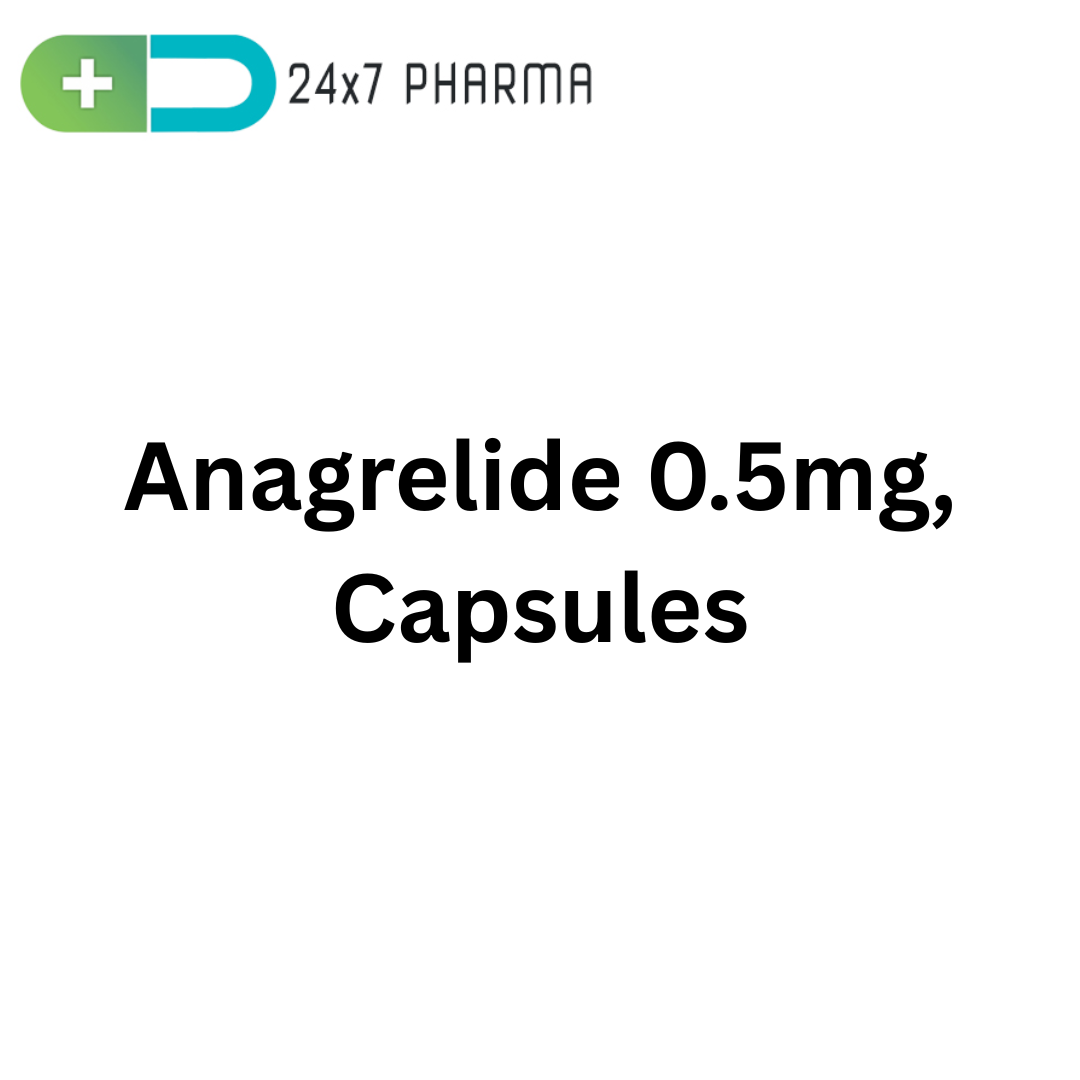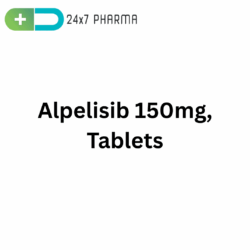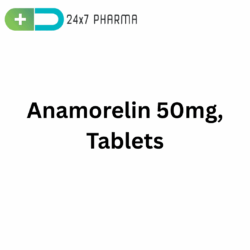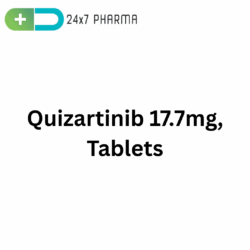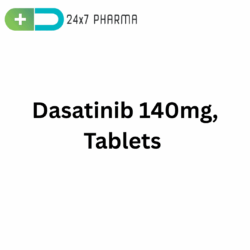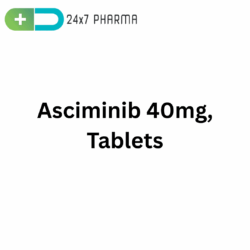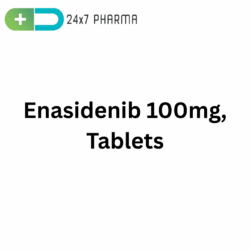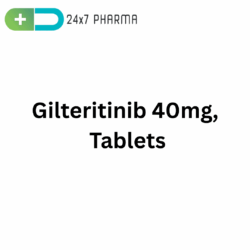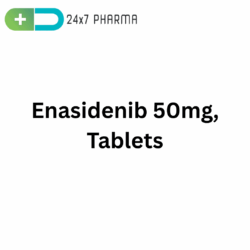LuciAnagre 0.5 mg, containing the active ingredient anagrelide, is a medication primarily used to manage elevated platelet counts in individuals with essential thrombocythemia (ET) or thrombocythemia associated with myeloproliferative disorders. These conditions can lead to an increased risk of blood clots, strokes, or bleeding episodes. By reducing platelet production, anagrelide helps mitigate these risks. Anagrelide works by specifically targeting the bone marrow cells (megakaryocytes) responsible for producing platelets, thereby reducing their output.
Mechanism of Action
Anagrelide functions as a selective inhibitor of phosphodiesterase type 3 (PDE III). Its main action site is the megakaryocyte, the large bone marrow cell responsible for producing platelets (also known as thrombocytes).
1. Inhibition of Megakaryocyte Maturation
Anagrelide inhibits the maturation of megakaryocytes, preventing them from fully developing into cells that release platelets. It does this by interfering with the cellular processes that drive megakaryocyte growth, leading to a decrease in the number and size of platelets formed. This is a selective effect—anagrelide does not generally suppress other bone marrow functions like red or white blood cell production.
2. Phosphodiesterase III Inhibition
Additionally, anagrelide inhibits phosphodiesterase III (PDE III) selectively. An enzyme called PDE III aids in the cell’s breakdown of cyclic adenosine monophosphate (cAMP). By blocking this enzyme:
- cAMP levels increase in megakaryocytes.
- This disrupts normal cell signaling needed for megakaryocyte maturation and platelet formation.
- The result is a reduction in both platelet size and number.
- This mechanism is partly responsible for cardiovascular side effects (like palpitations and tachycardia), as PDE III inhibition can also affect heart and vascular tissue.
3. Minimal Effect on Platelet Function
Unlike antiplatelet drugs such as aspirin or clopidogrel, anagrelide does not significantly impair platelet function—it mainly reduces the number of circulating platelets. This makes it less likely to cause bleeding compared to drugs that prevent platelets from working altogether.
Indications
1. Essential Thrombocythemia (ET)
An excessive number of platelets are produced by the bone marrow in essential thrombocythemia, a chronic illness. This excess production may raise the possibility of:
- Thrombosis (blood clots)
- Stroke
- Heart attacks
- Peripheral vascular complications
- Bleeding
LuciAnagre is used in this context to lower the platelet count to within a safer range and prevent thromboembolic or hemorrhagic complications.
2. Thrombocythemia Secondary to Other Myeloproliferative Neoplasms
Anagrelide is also indicated in cases where elevated platelets are associated with other myeloproliferative disorders, such as:
- Polycythemia Vera (PV)
- Chronic Myeloid Leukemia (CML)
- Primary Myelofibrosis (PMF)
In these cases, LuciAnagre may be used as part of a broader treatment regimen to control platelet levels and reduce vascular risks.
3. Second-Line Therapy or in Patients Intolerant to Other Treatments
Anagrelide is especially useful as an alternative when:
- Patients cannot tolerate hydroxyurea, the typical first-line therapy.
- There’s a need to avoid DNA-damaging agents in younger patients or those of childbearing potential.
Dosage and Administration
Proper dosing and administration of LuciAnagre (Anagrelide) is crucial for both its effectiveness and safety. Since the goal is to reduce platelet counts gradually and safely, therapy must be tailored to each patient’s response and tolerance.
Starting Dose :
- 0.5 mg taken four times daily, or
- 1 mg taken twice daily for the first 7 days.
Purpose of this phase:
- To begin lowering platelet levels slowly.
- To assess the patient’s tolerance to the medication, especially cardiovascular effects.
How to Take LuciAnagre:
- Can be taken with or without food.
- Take with a full glass of water.
Missed Dose Instructions:
- Take it as soon as remembered.
- Maintenance Dose: Typically ranges from 1.5 to 3 mg per day, adjusted based on platelet counts.
Side Effects
Common side effects
- Cardiovascular : Palpitations, rapid heartbeat (tachycardia), low blood pressure (hypotension)
- Gastrointestinal : Nausea, diarrhea, abdominal pain, loss of appetite
- Nervous System : Headache, dizziness, fatigue
- General : Weakness, edema (fluid retention), shortness of breath
- Skin : Rash, flushing
Serious side effects
- Heart Disease: Anagrelide can worsen existing conditions like congestive heart failure or arrhythmias.
- Hypotension: May lower blood pressure significantly, especially in dehydrated or elderly patients.
- Pediatric Use: Safety profile in children is not well established and must be closely monitored.
Storage
LuciAnagre 0.5 mg should be kept in a cool, dry, and dark place, ideally in its original packaging.
- Temperature : 15–30°C (room temp); avoid heat/freezing
- Keep kids and dogs in a safe, out-of-reach location.
- Expired medication : Dispose of safely—do not flush or trash openly
- Avoid using after the expiration date.
Benefits
LuciAnagre 0.5 mg is a targeted, effective, and well-tolerated option for managing chronic platelet overproduction in hematologic disorders.
- Reduces platelet count : Controls ET and thrombocythemia
- Lowers risk of thrombotic events : Prevents heart attacks, strokes, and DVT
- Alternative to hydroxyurea : Suitable for patients who can’t tolerate first-line meds
- Oral dosage form : Improves convenience and patient adherence
- Minimal bone marrow suppression : Fewer side effects compared to cytotoxic agents
- Usable in older or vulnerable patients : Broadens treatment accessibility
Prescription Information
LuciAnagre 0.5 mg is a prescription-only medication. It needs to be used under the guidance of a qualified healthcare professional.
Drug Interactions
- Aspirin and NSAIDs: Concurrent use may enhance antiplatelet effects, increasing bleeding risk.
- CYP1A2 Inhibitors (e.g., fluvoxamine): May reduce anagrelide clearance, necessitating dosage adjustments.
- CYP1A2 Inducers (e.g., omeprazole): May increase anagrelide clearance, potentially reducing efficacy.
- Digoxin and Warfarin: No significant interaction observed.
FAQs
-
Is LuciAnagre available over the counter?
No, it requires a prescription.
-
Can I take LuciAnagre if I have heart problems?
Use with caution if you have heart disease.Throughout treatment, your doctor will keep a careful eye on your heart.
-
How long will I need to take LuciAnagre?
Treatment is often long-term and based on maintaining safe platelet levels and preventing complications. Your doctor will guide you.
Conclusion
LuciAnagre 0.5 mg (anagrelide) is an effective treatment option for managing elevated platelet counts in conditions like essential thrombocythemia. While it offers significant benefits in reducing thrombotic risks, careful monitoring and adherence to prescribed dosages are crucial to minimize potential side effects. A healthcare professional should always be consulted before beginning or modifying treatment.

